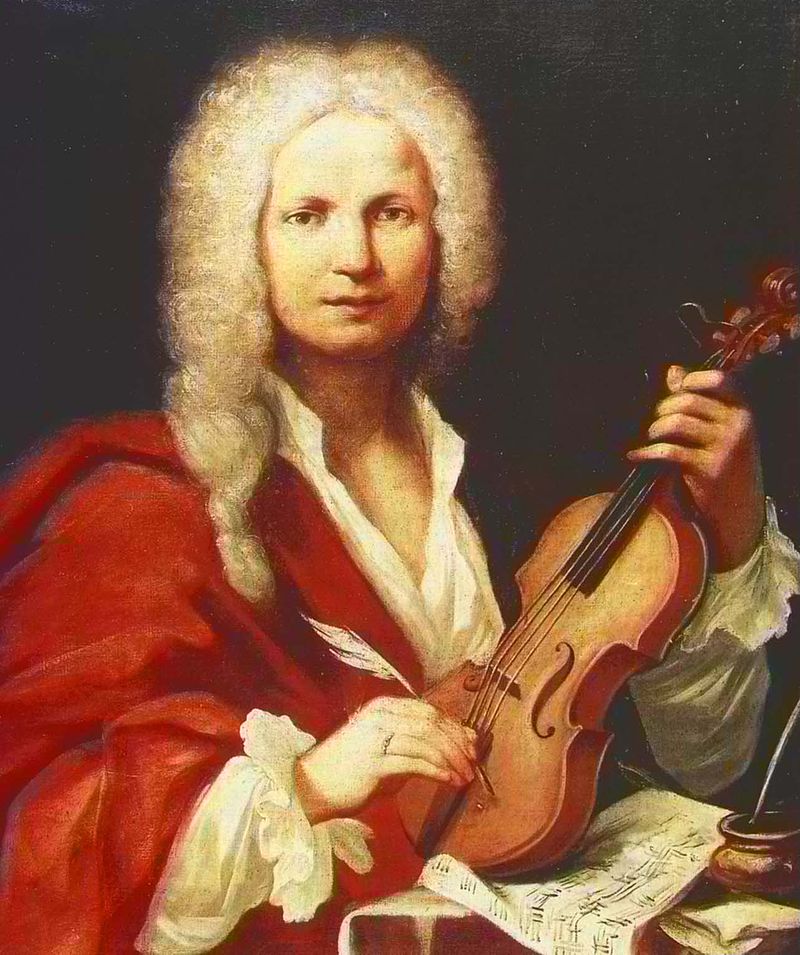David Heyes
Antonio Vivaldi (arranged by George Speed): Sonatas 1-6 for double bass & piano (Orchestral Tuning)
Antonio Vivaldi (arranged by George Speed): Sonatas 1-6 for double bass & piano (Orchestral Tuning)
Couldn't load pickup availability
About the Sonatas
Vivaldi’s Six Sonatas, originally for cello and first published in the 1740s, are at the very heart of the double bass recital and teaching repertoire today.
A number of editions already exist, but George Speed has expertly transposed them into higher and more soloistic keys, adding vibrant, tasteful and idiomatic new accompaniments, creating a new double bass edition for the 21st-century.
Fingering and bowing suggestions have been added and the Six Sonatas are available with accompaniments for both solo and orchestral tuning.
About the Composer
Antonio Vivaldi (1678-1741) is regarded as one of the greatest Baroque composers alongside his work as a virtuoso violinist, teacher and impresario. He composed almost 500 concertos, choral works and more than 50 operas, and is best known today for The Four Seasons, a series of four violin concertos which were composed c.1718-20. In 1703 Vivaldi was appointed violin master at the Ospedale della Pietà, a home for foundlings. The Pietà specialised in the musical training of its female wards and over the years Vivaldi was employed as violin master and director of instrumental music. Much of Vivaldi’s music was forgotten after his death, rediscovered in the early 20th-century, and his legacy is secure for generations to come.
“My exploration of the Vivaldi cello sonatas began in 1994 after I heard my mentor, Edgar Meyer, perform a stunningly beautiful rendition of Sonata No. 6 at Vanderbilt University. Edgar opted for a minimalist approach to the music, accompanied simply by a bass line in the piano and with very few embellishments in the solo line. At around the same time, I discovered the playing of French cellist Christophe Coin, whose expressive and historically informed recording of the six sonatas I admire to this day. With these two great artists as my principal influences, I thus began a 20-year-long journey of study and appreciation for Vivaldi's works.
I enjoy these pieces for their relative simplicity, but also for their musical vibrancy. I have examined earlier Vivaldi sonata transcriptions in which the solo bass part sounds an octave below original pitch, and while one can certainly appreciate Vivaldi's genius in those editions even the best performances lack a certain brilliance of sound. In my transcriptions I have attempted to capture the original, virtuosic spirit of the pieces, while at the same time showcasing the natural timbre and resonance of the bass. I have sought to select an idiomatic key and flattering tessitura for each sonata – neither too low nor too high for effective performance on the bass – and I have also allowed for performance in either orchestral or solo tuning, depending on the needs and preferences of the performer. The only sonata that retains its original key and tessitura is the third, which sounds in A minor when played in solo tuning. The others range from a fifth below original pitch (Sonata No. 5, originally in E minor, transposed to A minor in orchestral tuning) to a minor second below original pitch (Sonata No. 1, originally in B-flat major, transposed to A major in solo tuning).
A secondary, but no less important, issue is the style of the accompaniment. I enjoy playing these pieces with a simple bass line accompaniment, but I recognize that most players prefer a more substantial and supportive keyboard accompaniment. My main concern was avoiding an overly busy or convoluted piano part, a problem that I've experienced with many 20th century transcriptions of Baroque repertoire. I therefore tried to keep the keyboard texture as transparent as possible while still providing adequate support for the solo line. In most instances the piano part is limited to 2 contrapuntal lines, or simply block chords, thus allowing the solo part to shine.
My principal source for these transcriptions was the first printed edition of the works, published in Paris by Le Clerc in around 1740. In addition, I used two primary sources that predate the more standard Le Clerc: a manuscript of Sonatas 1-6 from the Bibliothèque Nationale, Paris; and a manuscript of Sonata 6 from the library of the Counts of Schönborn-Wiesentheid in Wiesentheid, Germany.
I hope that my transcriptions inspire many other bassists to explore these fantastic works of art.” [George Speed, August 2018]
About the Arranger
Bassist George Speed enjoys a career that combines teaching with solo, chamber, and orchestral performing. He is an Associate Professor of Double Bass at Oklahoma State University and Principal Bass of the Oklahoma City Philharmonic. In 2016, George joined the artist faculty of the Brevard Music Center in Brevard, North Carolina and has performed with the Boston Symphony, Boston Pops Esplanade Orchestra, Florida Philharmonic Orchestra, Dallas Symphony, Fort Worth Symphony, and Handel and Haydn Society, among others.
George is passionate about both chamber music and solo performance. A frequent recitalist, he also plays regularly with the Oklahoma City-based chamber ensemble Brightmusic. In August 2018, Centaur Records released a recording of his Vivaldi cello sonata transcriptions.







